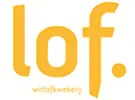In Belgium, the Netherlands, and France, chicory remains one of the top ten most-bought vegetables. But those consumers are aging. So, Dutch chicory grower LOF. is trying its utmost to keep this vegetable in the picture and is involved from start to finish. Their chicory goes all over the world, mostly as semi-finished products. In Europe, they sell chicory as well as grow kits to hobby farmers.
Chicory is a year-round product, but the new growing season begins in October. Then the old chicory pens are uprooted. The last growing season was satisfactory; how the new chicory crop will turn out was unknown at the time of writing. The weather conditions in the final growth weeks will determine how much energy the plants store in their pens. That helps the chicory grow. "We sell most of our pens to other chicory growers, so we do a trial run of every batch," says account manager Kristha Heibrink.
"By now, we have so much experience that we'll soon be able to predict fairly well what we can expect, volume-wise. We currently have 500 hectares of pens in the ground. We'll use some ourselves for chicory cultivation. The rest goes to chicory growers worldwide. It is sent to places like Germany, Belgium, and France. But also, for example, to New Caledonia. You could say that wherever there are Dutch or Belgian people, chicory is sold in the big cities."
Chicory cultivation is very high-tech. It is indoor, vertical, and hydroponic farming, all in one, not in a greenhouse but dark sheds. That makes it easy to farm near the market. LOF. has farms in the Netherlands and two locations in Germany. "Germans prefer locally-grown products, even at a regional level nowadays. These farms, therefore, offer a good entry into the German market where chicory popularity is growing," Kristha explains.
Of the chicory LOF. grows in the Netherlands, 50 to 60% is destined for export. They keep a close eye on the ball in that regard. "You can, in principle, store chicory for two weeks if the storage conditions are optimal. Experience, however, shows that this is often not feasible in the logistic chain. That's why we give, at most, one week between harvest and consumption. We do customized packing so we can deliver fresh products to our clients the next day. The journey, thus, remains very short."
Chicory first became popular in Belgium. Consumption then spread to the Netherlands and more and more people in Germany and Italy are eating it. Because it is a biennial crop, there is only broad data about its market ratios. The pen acreage and volumes of chicory are known, but there is a grey area in between.
What is clear, however, is that there are far fewer Dutch chicory growers than in the past. Thirty years ago, there were 50 of these growers in the Noordoostpolder region alone. Now that is the number of active growers in the whole country. But these growers have taken over cultivation and greatly expanded their production. So, chicory remains a very price-sensitive product.
The biggest challenge for the future lies in pen cultivation. If even more substances are banned, pest control will become truly challenging. LOF. was one of the first cultivation companies to have On the Way to Planet Proof certification. It also carries the Milieukeur, the Dutch environmental quality label. The market, however, does not pay enough to cover any additional costs to enable further sustainability. "For that, chicory prices would have to rise by €0.05 to €0.10/kg," says Kristha.
Chicory is available year-round, so it is a popular promotional product. "Most supermarkets have a chicory promotion every five to six weeks, which is quite often. Also, extra demand can suddenly arise when a certain product isn't available, and the market is looking for alternatives. They often turn to chicory because it's always available so that you can switch quite easily."
Although chicory is prized for its bitter flavor, it is mainly its shape and size that play a role in the market. LOF. sells its product widely to local and overseas retailers and wholesalers, both directly and through exporters. "We strive for a spread of several large customers, supplemented with smaller ones," continues Heibrink.
"In that way, we have stable sales throughout the year for all grades. We control the entire process and have long-term relationships with our buyers. We thus keep them well informed and can respond to new developments. In recent years there's been increasing demand from, particularly domestic retailers. They prefer short, large sizes. Exports often require longer pieces."
LOF. offers customized packaging too. "There's discussion around plastic, but plastic packaging benefits products' shelf lives and ultimately reduces food waste. We do consider packaging sustainability very carefully. Most of the chicory that goes overseas does so in plastic-lined crates or boxes. There's demand for shrink-wrapped trays, but we deliberately choose to supply chicory only in flow packs," Kristha says.
"Then you waste less packaging. And it's better for the quality/durability. We developed the flow pack film ourselves. It has micro-holes that ensure the packaging has an optimum climate. They also filter the light to prevent and delay green discoloration. Demand for flow packs is growing, especially in the Dutch market. It now accounts for 60-65% of that market."
Flow packs have another advantage - You can print company logos and recipe ideas on them. "We are no longer anonymous in stores; shoppers know where to find our products," says the account manager. "They contact us, which is great and very informative. We also have a lot of contact with consumers through our home grow kits."
"There's a tremendous demand for those. Our website, www.witlofkweekset.nl, is ranked high on Google. During the first lockdown especially, many people ordered these kits for their kids. That's fantastic. Because when children grow chicory themselves, they like it too," Kristha concludes.
Witlofkwekerij LOF. Pilotenweg 28/1
Pilotenweg 28/1
8311 PL Espel
Tel: +31(0)527 271 616
verkoop@witlofkwekerijlof.nl
www.witlofkwekerijlof.nl
